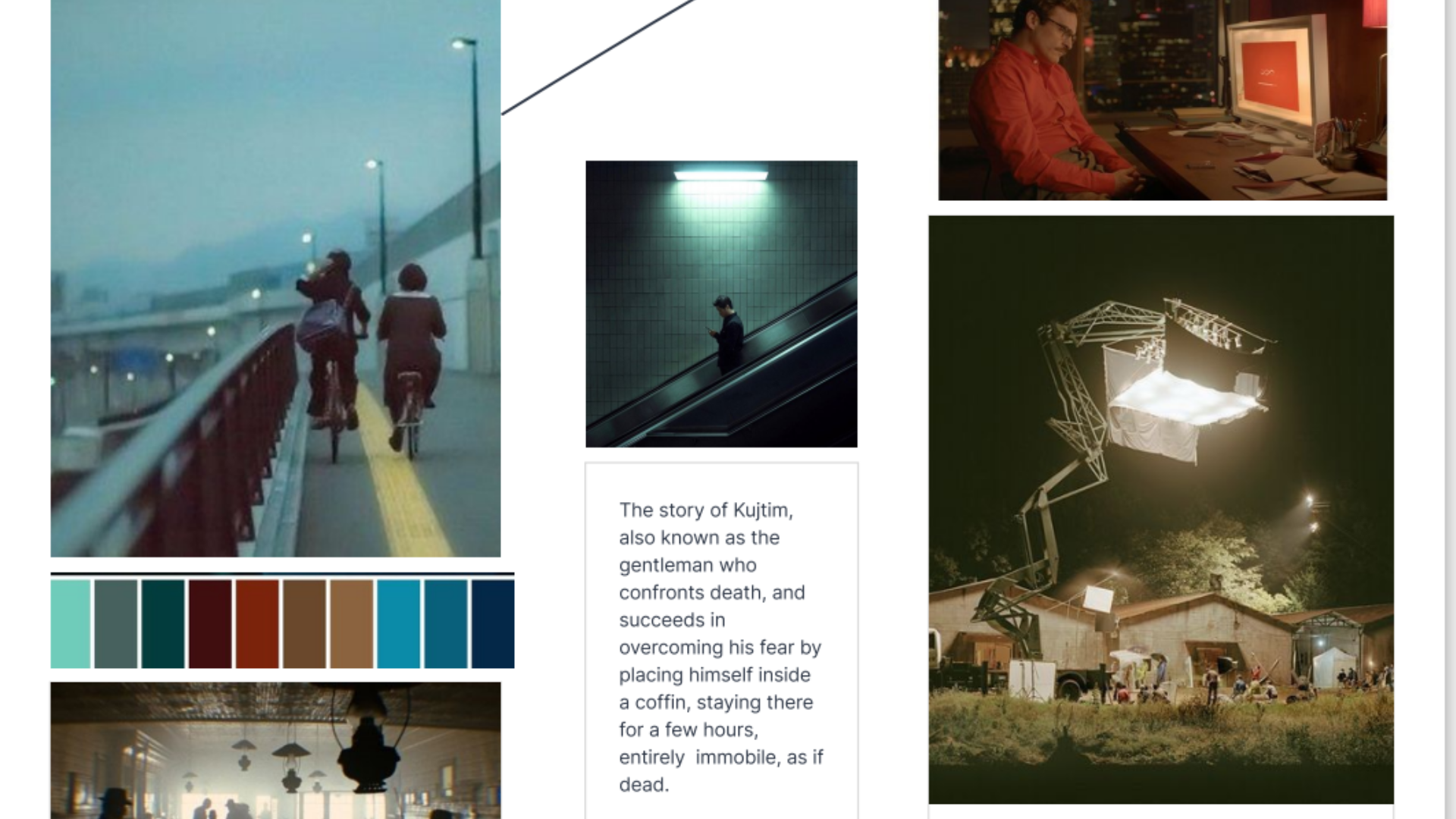THE STRANGER
Date
27/10/2022
Director
Ornela Karaj (Albania)
Producer
Dionis PAPADHIMITRI (Albania)
Mood Board
Budget
-
Contact
ornelakaraj24@gmail.com
Contact
dionispapadhimitri@gmail.com
Teaser
-
Synopsis
“The Stranger” depicts, in a most realistic manner, the last days of our protagonist, Kujtim. He is a man of approximately 50 years of age who works as an extra, his role in every movie being that of “The dead one.” Due to the nature of his role, the movie’s entire storyline progresses in the sets of a number of different films. Kujtim seems to have given up his dreams of ever becoming a protagonist, yet still hopes that one day he may be offered the role of a living and speaking human being. We experience the story of Kujtim’s life in two dimensions, the real and the internal. Nevertheless, his thoughts and experiences are often juxtaposed with a younger boy, who appears to be either a reflection of Kujtim himself, possibly his son, or perhaps of the son he longs to have. While embodying the role of “the dead one,” Kujtim is often constrained to remain mute and immobile for long periods of time, and he uses this moment of tranquility to escape from reality into his own musings. Kujtim is a person of a calm disposition and positive outlook and, in an almost grotesque fashion, he takes special joy in his work, where he can play dead inside a coffin. In the four different film sets where Kujtim works as an extra, we get to watch fragments of future movies, each one depicting different realities. In the meantime, a simultaneous story evolves, that of the relationship between him and Ela, a makeup artist who is employed in many of the same movies as Kujtim, someone he especially likes and with whom he has finally secured a date. Following the conclusion of the last scenes of filming, the entire staff is busy collecting all equipment and clearing out the film set. In the meantime, the incessant ringtone of Kujtim’s cellphone is heard on set but no one seems to have noticed Kujtim, who remains still inside the coffin until the last sound of the ringtone is heard and there is no answer because, this time, Kujtim has really died. There is no screaming and no message. Life goes on, silently.
Director’s Statement
“The Stranger” is inspired by a true story, but many of its details, including the protagonist’s death, are fictional and adapted for this screenplay. Kujtim, approximately fifty years of age, has a very particular job. His talent is to play the “dead man” in films, a truth that becomes obvious by the great demand he has for this specific role. However, Kujtim’s dream is to, one day, earn a speaking role. The film has a variety of characters and includes a number of Albanian rituals, most of which we encounter in the film set scenes. The movie interweaves Kujtim’s real life with the one on set, in which he becomes, through different looks and clothes, a series of dead men. An important plotline concerns Kujtim’s relationship and love of Ela, a makeup artist in the films where he plays an extra. Ela has a son, for whom Kujtim cares very deeply. Is the boy Kujtim’s son or simply the son of Ela, with whom Kujtim is trying to have a relationship? Does Kujtim have a history with Ela, or is he in the first few stages of a new love story?
What urged me to translate this story into a series of images is a great sense of curiosity about Kujtim as a character. I wondered what incites Kujtim to do this job, what he thinks about when he lies motionless in a coffin, how he faces this “confrontation” with death. He is undoubtedly courageous, a true protagonist, almost in the ancient heroic sense. How many of us, in full awareness, could lay inside of a coffin? I would not. I would like to especially focus on Kujtim’s two distinct emotional worlds, thus depicting the contrast between the real (physical) and the invisible (internal). Kujtim is a quiet dreamer with a positive disposition. It appears as though Kujtim has accepted his circumstances as we witness his constant preparations for his work and the fulfilment he gets from it. Somewhat grotesquely, he actually enjoys going to work, in order to lay in the coffin and play dead.
Kujtim has a special connection to his cellphone. So much so, that his phone seems to represent a bridge between him and reality as well as the object of his affection, Ela. The opening scene of the film finds Kujtim laying in the coffin, an image that, to the viewer, will appear to be a real funeral, until Kujtim’s cell phone rings, he opens his eyes and proceeds to answer while still in the coffin. In the last scene of the film, in contrast, Kujtim’s phone rings incessantly while he lays in the coffin but, this time, no one answers. To portray the story with maximal authenticity, scenes will be filmed using a hand-held camera in the style of a film documentary so that the film seems to depict Kujtim’s real life, as if the camera is an eye that follows him everywhere. In general, the film will follow a light rhythm scheme, with long shots, shot in constant movement, while the scenes of the film sets where Kujtim works as an extra will be more rhythmic in nature, during both the filming and editing stages. The color palette will be warm in order to evoke the positivity and hope that emanates from the protagonist. Even though Kujtim’s story is quite dramatic, the drama will be subdued, not unleashed on the audience via scenes of anguish, but suppressed so that the hope and optimism of the protagonist shape the story.
In the end, the question I would like the film to pose to the viewer is: “Did Kujtim live or simply exist?”



